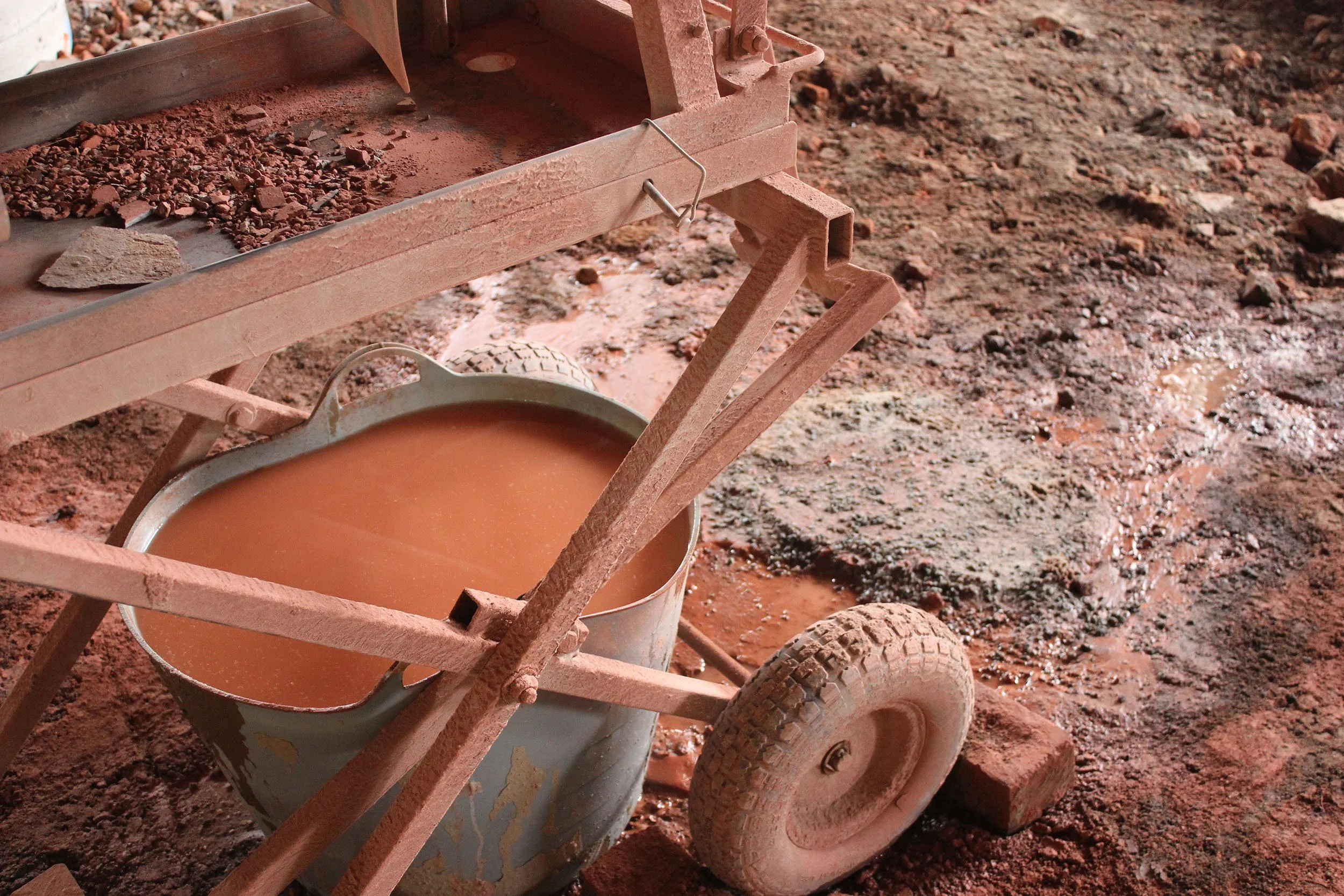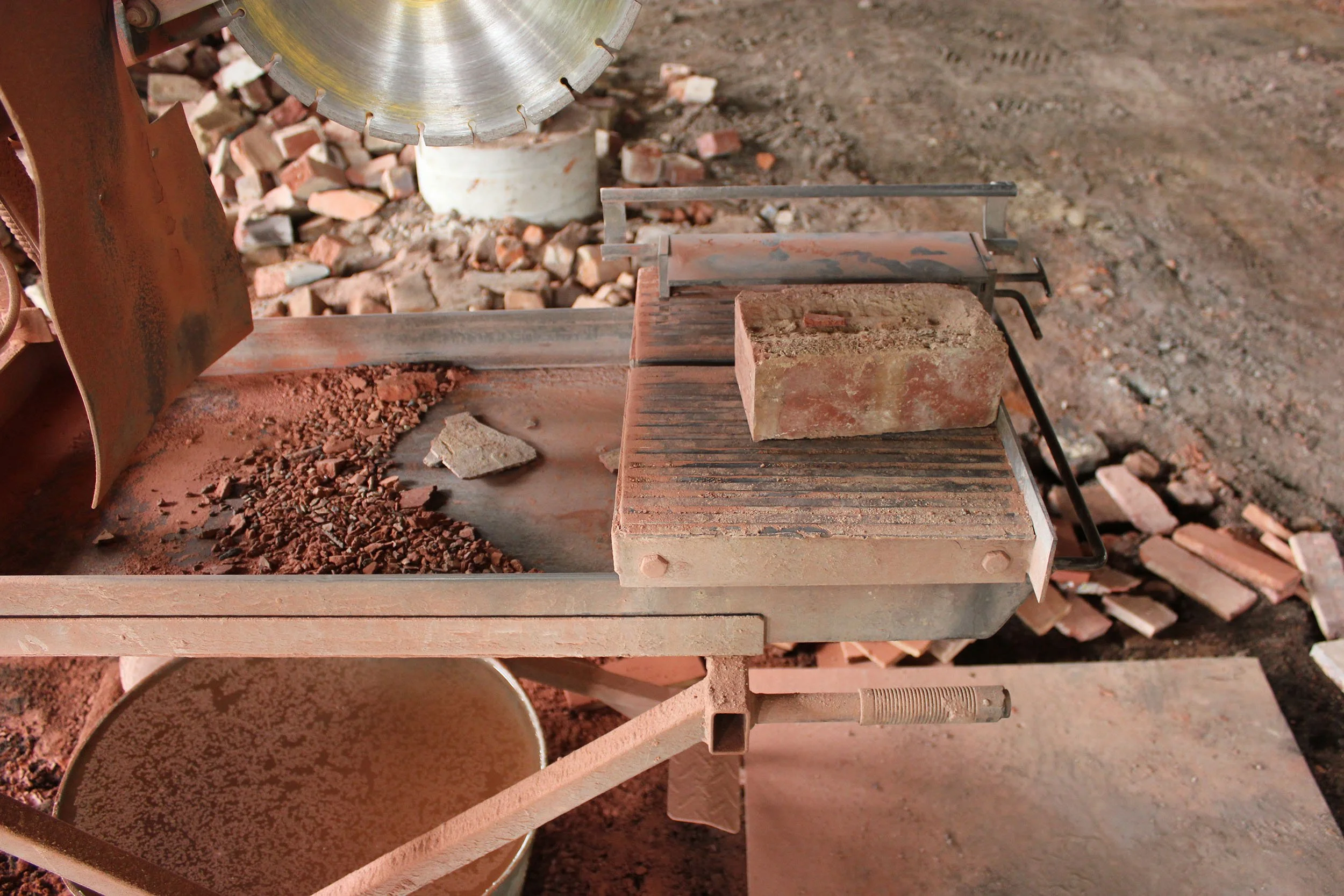Collected Material File #08
Brick Cutting Sludge
Collection Details
47 Easey Street, Collingwood, 3066, Victoria
Wurundjeri Woi Wurrung Country
Courtesy of Robbie Neville, Revival Projects
November 2022
Collection Type
Construction and demolition byproduct from an adaptive reuse warehouse renovation
Previous Use
Brick cutting sludge (fine particles) collected from a wet-cutting machine.
The story of collection
The first batch of material collected as part of the Breaking Ground research project included brick rubble, reclaimed from a 1920s warehouse at 47 Easey Street, Collingwood. In 2022, after their inaugural MDW talk, I reached out to Robbie Neville from Revival Projects, a B-corp certified sustainable building practice based in Collingwood.
Hoping that I could go on site and collect exposed clay or earthworks that were about to be displaced or sent to landfill, I realised when arriving on site that there was instead an abundance of construction and demolition ‘waste’ or byproducts that were deemed unsuitable for recycling.
These aren’t just any old bricks though. There’s a story, history, and meaning behind them. They’ve been exposed to countless hours of music while PBS fm radio station was housed within the walls they were part of. They’ve witnessed raves, accommodated squatters, hosted a website server warehouse, bootmakers, a chocolate factory and wool storage*.
The building materials are site specific and hold geographic identifiers: these bricks were made in surrounding suburbs using clay from clay pits within the Melbourne area. Read more about Melbourne’s Urban Fringe Claypits via this conference paper.
During construction in 2022, the deconstructed bricks that had a small amount of damage (ie, only a corner missing) were cut into ‘slip’ format using a brick cutting machine to be repurposed as pavers for the new internal courtyard at Easey Street. A bucket beneath the cutting saw held the fine particles of brick, which I spotted straight away when on site in November 2022. This material is already perfect for creating glazes with.
*47 Easey Street building history, from https://easeystgroup.com.au/space/
Extended Material Data
Coordinates
-37.79785412649077, 144.98661158830336
Council / Zoning
Yarra, C2Z (Commercial 2)
Material Origin
Clifton Brickworks. Assumed Preston and Brunswick claypit sites
Composition
Clay (alumina and silica) and grog (fired crushed clay for workability, strength, and low shrinkage)
Measurements (mm)
Brick in fine particle form when collected in November 2022.
Absorption
Range from 6.5 - 15.6%
Appearance
Red and grey fine particle soaked sludge.
Characteristics & Crushing Notes
No crushing necessary - sludge already in fine powder form suitable for use in ceramics.
Post-firing Characteristics (Cone 6)
Retains form, does not melt. Colour darkens to deep red-maroon.
Potential Applications in Ceramics





